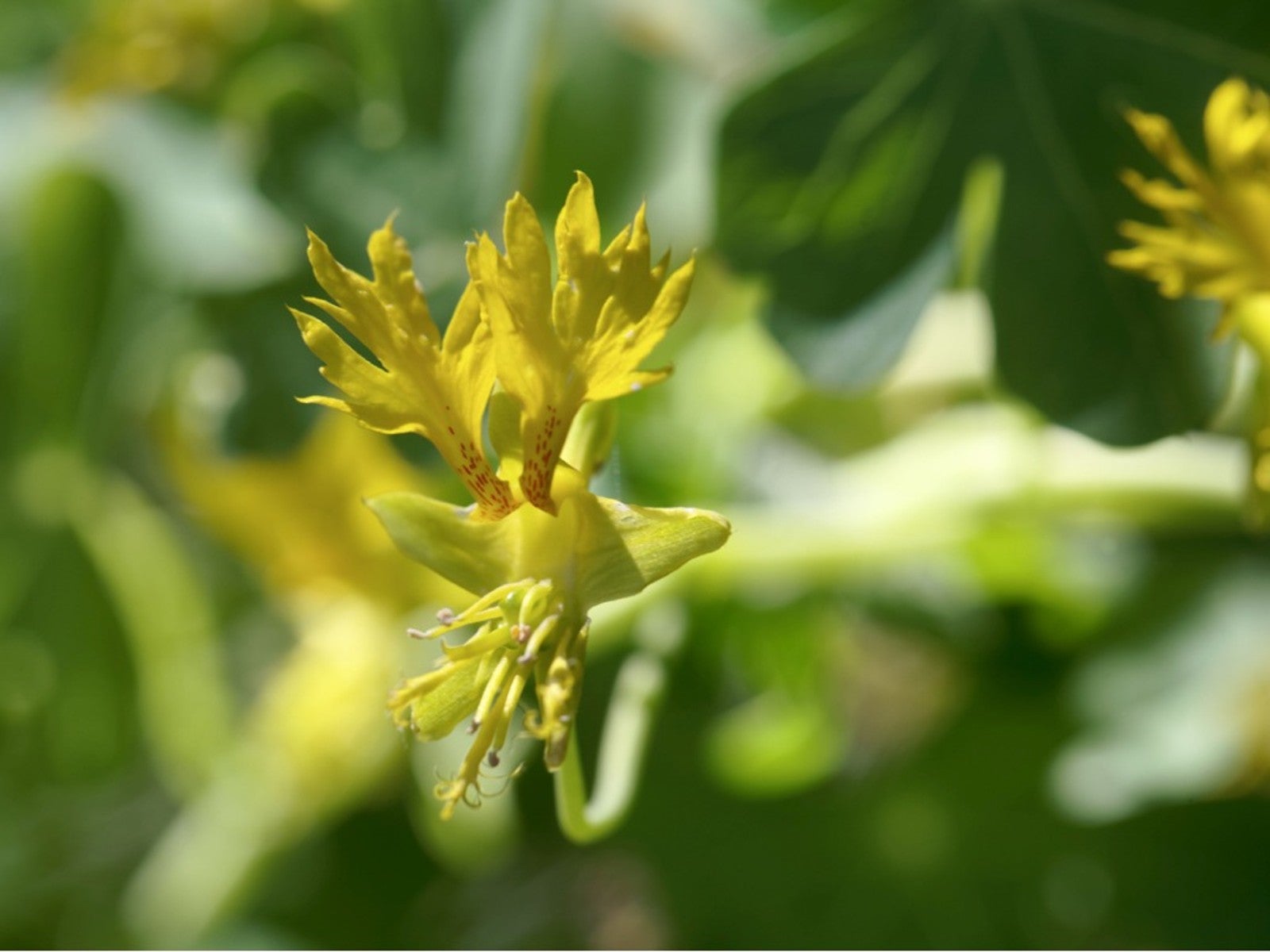Canary Creeper Flowers: How To Grow Canary Creeper Vines


Canary creeper plant (Tropaeolum peregrinum) is an annual vine that is native to South America but very popular in American gardens. Despite the slow-growing implications of its common name, it grows at a truly fast pace, quickly reaching 12 feet (3.7 m.) or more. If you are interested in growing canary creeper, you’ll need to learn something about the vine. Read on for some tips on how to grow canary creeper vines.
About Canary Creeper Vines
The canary creeper plant is one pretty vine and a cousin of nasturtium. It has deeply lobed leaves a minty shade of green, and brilliant yellow flowers. The canary creeper flowers grow two big petals above and three smaller ones below. The upper petals look like the wings of tiny yellow birds, giving the plant its common name. The lower petals are spurred. The canary creeper flowers make their appearance in spring and continue to bloom and expand all summer long as long as the plant gets adequate water. Canary creeper vines works equally well shooting up a trellis or covering a slope.
Growing Canary Creeper
Learning how to grow canary creeper vines is easy. You can plant the seeds in almost any well-draining soil. In fact, you’ll do better growing canary creeper in poor, dry soils than rich, fertile areas. If you are in a hurry, you can plant the seeds in containers indoors. Start four to six weeks before the last frost. After all danger of frost is passed, you can plant the seeds directly in the garden beds. When you plant outside, be sure to select a site with part sun, part shade. If possible, choose a spot where the vine is protected from intense midday sun. Canary creeper vine tolerates shade as long as it is in a spot that gets bright light. Perhaps the most difficult part about learning how to grow canary creeper vines is deciding where to plant them. Canary creeper plants are versatile vines that will quickly climb a trellis or arbor, decorate a fence top or flow gracefully from a hanging basket. The vine climbs by using twining petioles, which are touch-sensitive, or thigmotropic. This means that canary creeper vine can even climb a tree without doing any damage to it.
Gardening tips, videos, info and more delivered right to your inbox!
Sign up for the Gardening Know How newsletter today and receive a free copy of our e-book "How to Grow Delicious Tomatoes".

Teo Spengler is a master gardener and a docent at the San Francisco Botanical Garden, where she hosts public tours. She has studied horticulture and written about nature, trees, plants, and gardening for more than two decades. Her extended family includes some 30 houseplants and hundreds of outdoor plants, including 250 trees, which are her main passion. Spengler currently splits her life between San Francisco and the French Basque Country, though she was raised in Alaska, giving her experience of gardening in a range of climates.
-
 Looking For Plants To Give You The Soft And Fuzzies? Try These 5 Fuzzy Leaf Plant Options
Looking For Plants To Give You The Soft And Fuzzies? Try These 5 Fuzzy Leaf Plant OptionsLovers of texture, drama, silver foliage and tactile plants will adore these special sensory garden additions. These fuzzy leaf plant options will leave you all aglow
By Susan Albert
-
 Get Ready For A Summer Of Hummers! Grow These Full Sun Hummingbird Plants and Flowers
Get Ready For A Summer Of Hummers! Grow These Full Sun Hummingbird Plants and FlowersIf you’re lucky enough to enjoy a sunny backyard, make sure you are maxing out on your pollinator opportunities and grow these full sun hummingbird plants and flowers
By Tonya Barnett
